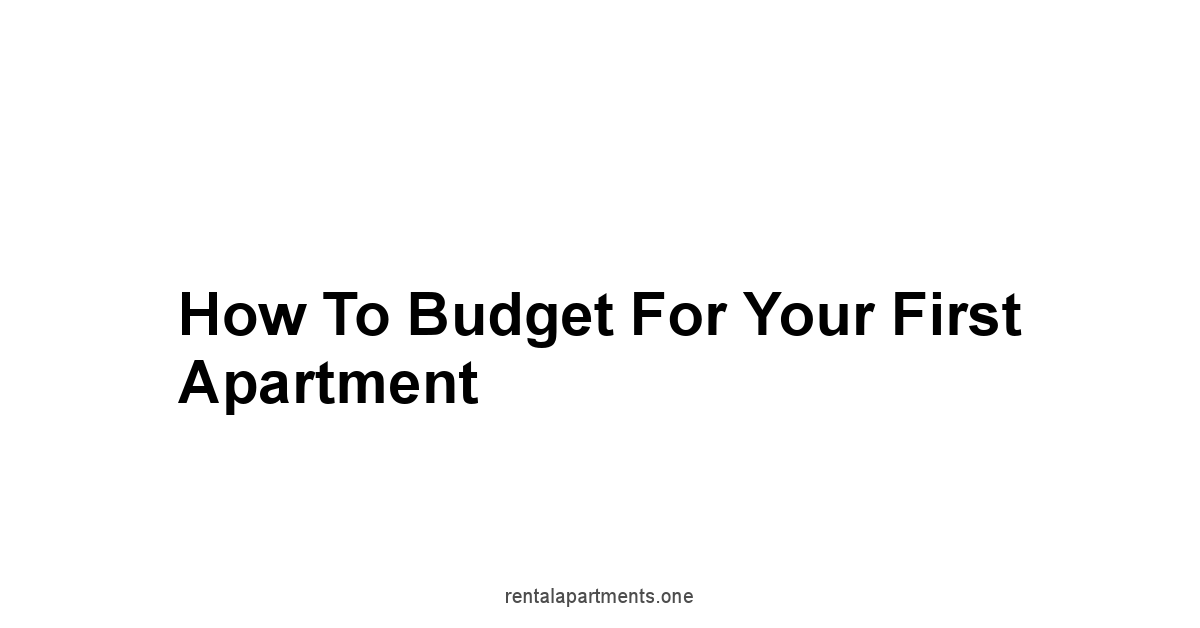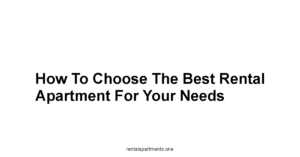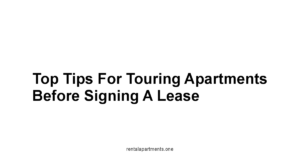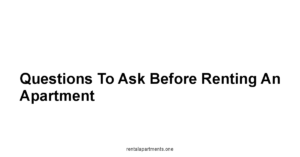Let’s break it down like a seasoned accountant: First, identify your real earnings.
That’s not the pretty gross amount before taxes and deductions, but the hard-earned cash that actually lands in your bank account.
Consider your regular paycheck, any side hustles, freelance gigs, the whole nine yards.
It’s like a meticulous inventory, noting every valuable item.
Now that you know your income, lets look at a table that shows it in more detail:
| Item | Amount |
|---|---|
| Gross Monthly Income | $4,000 |
| Federal Income Tax | -$600 |
| State Income Tax | -$200 |
| Social Security Tax | -$250 |
| Medicare Tax | -$100 |
| Health Insurance Premium | -$200 |
| Retirement Contribution | -$300 |
| Net Monthly Income | $2,350 |
Next, tackle the expenses, rent being the first and most obvious.
However, don’t forget about utilities – electricity, water, gas, and waste disposal, all add up.
Consider this: a seemingly affordable rent can quickly become a budget buster if utility costs are astronomical. A thorough breakdown will keep you on track.
Also, never forget to account for renters insurance, it is your safety net, it will cost you around $25 monthly for a $20,000 coverage.
Internet and cable might seem like small costs, but they add up, consider your options, whether you need to have cable, or if a streaming service will be enough for your needs, consider also the speed and type of your internet, basic plans cost around $40-60, but if you need faster speed, it can cost you around $80 or more, make your choices wisely, don’t spend money on something that you do not need.
Also, think about transportation costs, whether it’s public transit or your own vehicle, it’s a fixed cost, that needs to be budgeted for, as well as, groceries and house supplies, those are needs that you cannot just avoid, and you need to have a clear understanding of your costs, for both of them.
Moving has one-time costs, those need to be accounted for as well.
Security deposit, the first month’s rent, or costs of moving service, or even a truck rental.
You also might need new furniture or home goods, think about it and plan carefully. A table of those costs will help you:
| Item | Estimated Cost |
|---|---|
| Security Deposit | $1200 |
| First Month’s Rent | $1200 |
| Truck Rental | $200-$500 |
| New furniture | $1050-$3600 |
Finally, create a budget. Track all of your spendings.
Use a notebook, spreadsheet, or app to keep track of your money.
Budgeting apps, such as Mint, YNAB, or others, simplify this process by connecting your accounts and tracking your expenses for you, making your work easier.
Follow the 50/30/20 rule: 50% on needs, 30% on wants, and 20% towards savings or debt payment.
Start cutting back on non-essentials like eating out or any entertainment subscriptions that you don’t use frequently.
It’s not about deprivation, it’s about strategy, and about being in control of your money.
Understanding Your Income
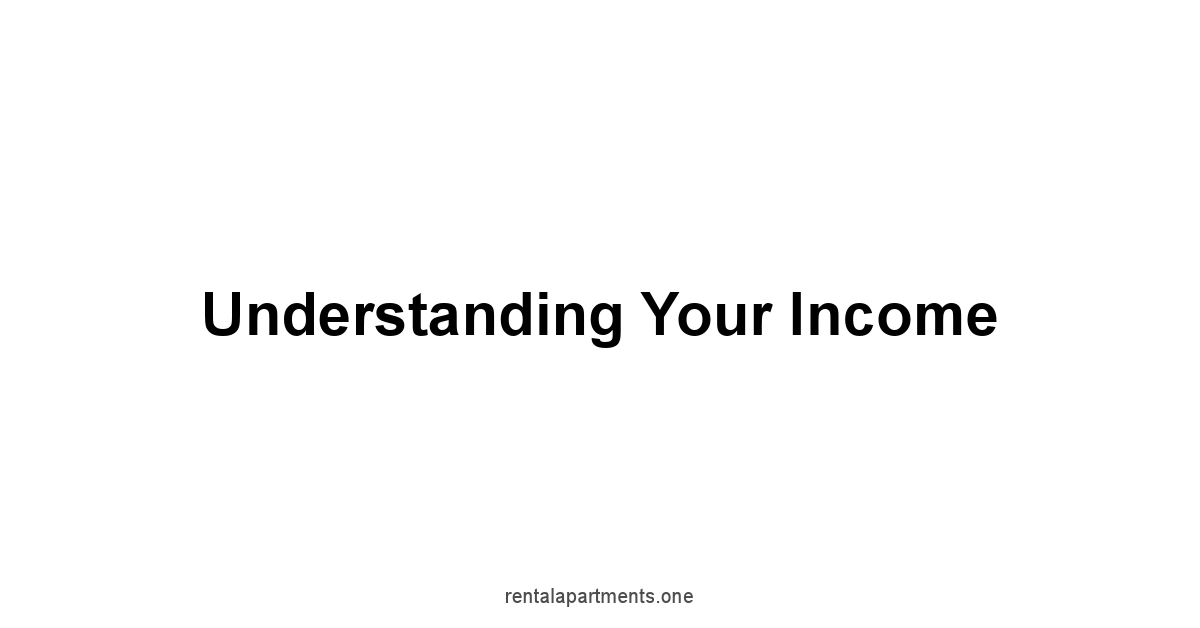
It’s a simple truth, you can’t spend what you don’t have.
Before you even start looking at apartments, you need to know exactly what’s coming in.
Not the gross amount, but the money you can actually use after taxes and deductions. This is your net income, the bedrock of any budget.
Ignoring this is like trying to build a house on sand, it will crumble.
You need a solid foundation to figure out what you can afford, and that foundation is your true take-home pay, the real number you’re working with each month. This isn’t complicated, it’s just real.
Knowing where all your money comes from is just as crucial.
Maybe it’s a regular paycheck, maybe it’s some side hustles you’ve got going, or some freelance work on the side, you need to know it all. Every dollar counts.
Don’t miss anything, if it’s coming in regularly, or even irregularly, add it to the list.
The more accurate your income tally, the more accurate your budget will be, and the less likely you are to have any surprises later.
Calculate Your Net Income
Net income, the number that lands in your bank account after all the deductions, is your real working capital.
You can’t build a life on the gross figure, that number on your offer letter is just a promise, not the reality. You need to look at your pay stub.
The tax man has already taken his cut, health insurance premiums are gone, and maybe even a retirement contribution if you’re forward-thinking. That bottom line, that’s the number that matters.
Here’s how to calculate it:
- Start with your gross income: This is the total amount you earn before any deductions.
- Subtract taxes: This includes federal, state, and local income taxes. Look at your pay stub for the exact amounts.
- Subtract other deductions: This includes health insurance premiums, retirement contributions, and any other pre-tax deductions you have.
- The result is your net income: This is the amount of money you actually have available to spend each month.
Let’s look at a table to get it clear.
Your net income is the true picture of your spending power.
It will tell you how much you can reasonably commit to rent, utilities, food, and that one or two beers with friends, and anything else you need.
Identify All Income Sources
Don’t just rely on one paycheck to calculate income, that’s foolish.
You need to know where all your money is coming from.
It’s a basic accounting principle, and the same rules apply to your personal budget.
List everything, no matter how small or irregular the source might be. A side hustle, a bit of freelance work, all of it.
If you want a realistic budget, you need the full picture.
- Regular Salary/Wages: This is likely your main source of income, the regular paycheck you receive from your employer.
- Side Hustles/Freelance Work: Do you drive for a ride-sharing service, or maybe do some graphic design work on the side, or even tutor students after hours? All of this income should be included.
- Part-time Jobs: Do you work part time on weekends or a few evenings during the week? Even a few hours a week can add up.
- Passive Income: This could include income from investments, rental properties, or anything that earns money without you actively working.
- Government Benefits: Do you receive any government benefits? Make sure to add those as well.
- Gifts or Financial Assistance: Do you receive regular financial help from family or friends, if so, include this.
It’s not enough to just think about this, write it all down, keep records of where the money came from.
Here’s an example list:
- Full-time salary from your main job
- Freelance writing gigs
- Driving for Uber or Lyft
- Income from selling handmade crafts online
- Dividends from stocks
- Monthly stipend from a scholarship
- Payments from an ongoing consulting project
Having a clear overview of your income streams will help you see where you can cut corners if needed and avoid future financial surprises, as well as accurately determine if you can really afford that first apartment.
Estimating Your Apartment Expenses
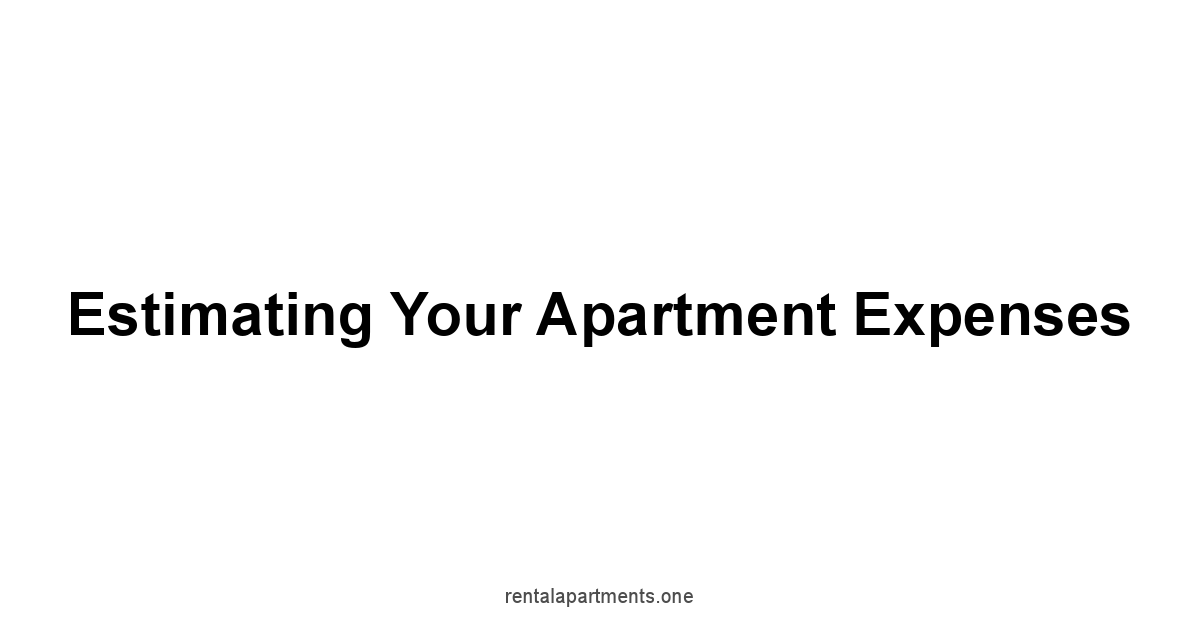
Once you know what you’re bringing in, it’s time to figure out what you’re sending out.
Rent is the big one, the most obvious expense, but that’s just the start.
Utilities, renters insurance, internet, all of that needs to be accounted for.
It all adds up fast, if you’re not keeping a close eye on it.
Being accurate about the costs is the only way to stay in control.
It’s a simple equation, your expenses can’t be more than your income, or you’ll soon be in trouble, but it’s also not that simple. You need to be detailed in your estimates. Guessing isn’t going to cut it here. You need hard numbers, not wishful thinking.
This is about being real, knowing exactly where every dollar is going, and that level of control will give you the peace of mind you need.
Rent and Utilities Breakdown
Rent is usually the biggest expense, but you can’t forget about the utilities. They can add a lot to the monthly bills.
A low rent apartment with outrageous utility costs can really bust a budget.
So, before you sign a lease, you need to get a clear picture of what you’ll be paying every month.
It’s about being aware, knowing where every cent is going.
- Rent: Look at your potential apartment leases, see what they are asking for. Don’t just assume every place will be the same price, every neighborhood and building is different.
- Electricity: This can fluctuate greatly depending on how much power you use. Some areas have different rates than others, look into it. Check with the local providers for estimates.
- Water: This is sometimes included in rent, but not always, you need to know before you commit. Ask the landlord or property manager.
- Gas: If your apartment uses gas for heating or cooking, factor that in. Same as with electricity, check with the provider.
- Trash and Sewage: Some landlords might include this in the rent, but some will have it as a separate charge. Again, ask before committing.
Here’s an example of how the monthly costs can add up:
| Expense | Estimated Monthly Cost |
|---|---|
| Rent | $1200 |
| Electricity | $80 |
| Water | $40 |
| Gas | $50 |
| Trash and Sewage | $20 |
| Total Utilities | $190 |
| Total Rent + Utilities | $1390 |
It’s crucial to get these estimates right.
This will ensure you don’t overspend, and you can find a place that fits your budget, instead of one that will put you in debt.
Cost of Renter’s Insurance
Renter’s insurance is something you hope you never have to use but you should always have it.
It’s a small price to pay to protect your belongings.
Landlord’s insurance only covers the building, not your stuff.
If a fire or a water pipe bursts, you’re on your own without renter’s insurance. This isn’t some luxury, it’s a necessity.
It’s about being smart and making sure you are ready for life.
- Coverage Types:
- Personal Property: Covers the replacement or repair of your belongings if they’re stolen or damaged.
- Liability: Protects you if someone gets injured on your property and you’re found liable.
- Additional Living Expenses: Can help cover the cost of temporary housing if your apartment becomes unlivable due to a covered event.
- Factors Affecting Cost:
- Coverage Amount: The more coverage you want, the higher the premium.
- Deductible: The amount you pay out of pocket before insurance covers the rest.
- Location: Insurance rates can vary based on where you live.
- Your Credit Score: Insurance companies might factor credit score into their price.
Averages cost of renter’s insurance
| Coverage Amount | Monthly Premium |
|---|---|
| $20,000 | $15-$25 |
| $30,000 | $20-$35 |
| $40,000 | $25-$45 |
| $50,000 | $30-$50 |
Get a few quotes from different insurance providers. Don’t just pick the first one you see.
A little bit of research can save you some real money.
Protecting yourself from the unexpected is essential, and renter’s insurance is an affordable way to do just that.
Internet and Cable Costs
In today’s world, internet isn’t a luxury, it’s a necessity.
You need it for work, entertainment, and keeping in touch with friends and family.
The days of just having a TV for entertainment are over, you need to account for these modern costs.
So, before you move into your apartment, make sure you have factored it in your budget, a good internet provider at a good price is necessary.
- Internet Plans:
- Speed: The speed you need depends on your usage habits. If you just need to check emails and browse the web, you can get by with a basic plan, but if you stream a lot, you’ll need something faster.
- Data Caps: Some plans come with data caps, which might cause overage charges, be careful with them.
- Contracts: Some companies will lure you in with lower rates, but lock you into a year or two. Consider the pros and cons of each before committing.
- Cable TV:
- Packages: If you like watching live sports or news, you’ll need to pay for cable. But these costs can add up quick, be sure you need it.
- Streaming Services: Netflix, Hulu, Amazon Prime, are good alternatives to cable for some, but these have monthly costs as well.
- Bundling: Sometimes you can bundle internet and cable for a better deal, but not always, so check the final cost of it before committing.
Here’s a table to help break it down:
| Service | Monthly Cost | Notes |
|---|---|---|
| Basic Internet | $40-$60 | Good for basic web browsing and emails |
| Faster Internet | $60-$80 | Better for streaming and multiple devices |
| Cable TV | $50-$100 | Depends on channel packages, can increase if you add premium channels |
| Streaming | $10-$20 | Per service. May need several for your entertainment needs |
| Total | $100-$260 | Based on services and usage |
Pick the internet and entertainment options that best fit your budget.
It’s easy to overspend on these things if you’re not careful.
Being wise about it will leave you more money for the things that really matter.
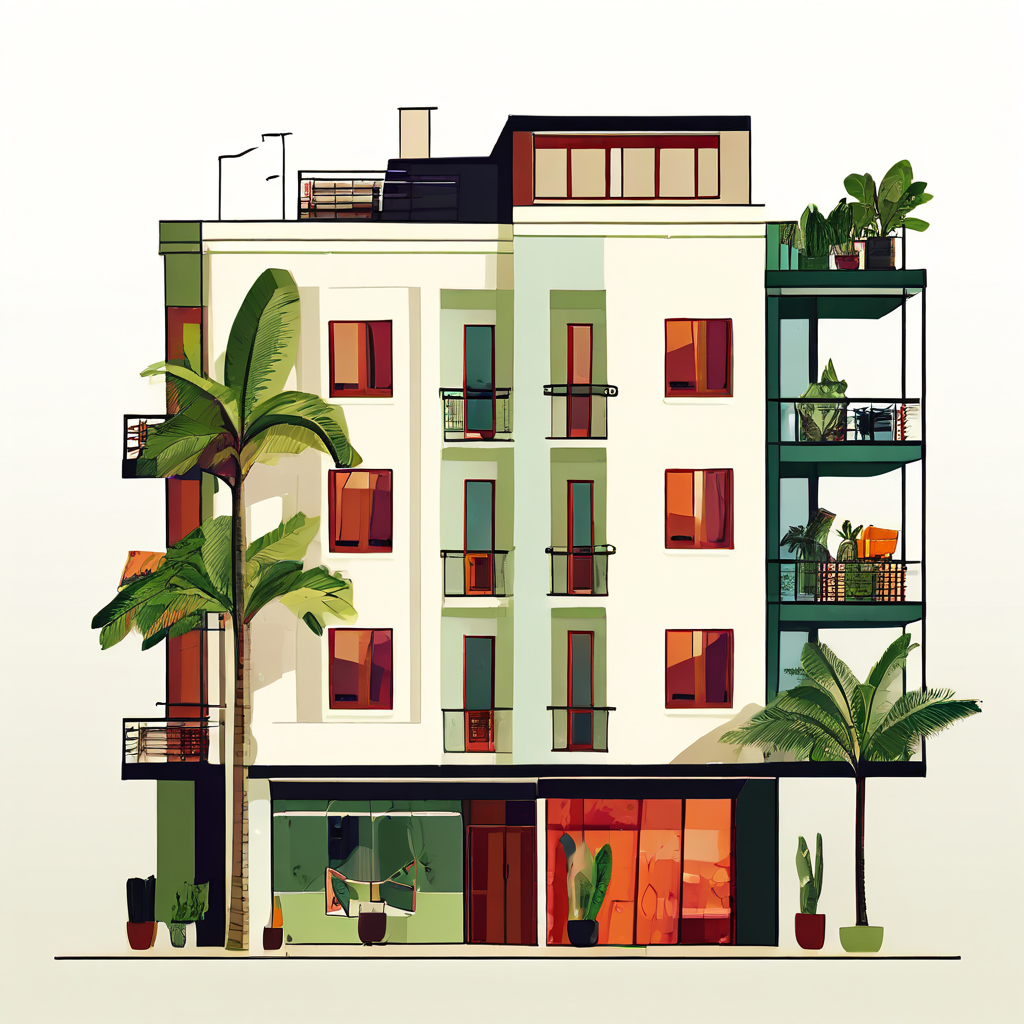
Commute and Transportation Expenses
If your apartment is not within walking distance to work and you need to drive or use public transport, this is another cost that needs to be accounted for.
This isn’t about just getting from point A to B, but a fixed cost that needs to be budgeted for, and it can really add up.
Over time, all those bus fares and gas refills will put a dent in your budget.
- Public Transportation:
- Monthly Passes: If you’re using the bus, train, or subway, you can save some money if you buy a monthly pass.
- Single Tickets: They can be costly if you rely on public transport often.
- Car Expenses:
- Gas: How often do you fill up? Factor in any changes in gas prices and your driving habits.
- Parking: Monthly parking fees can really add up, especially in the city.
- Car Insurance: This should already be in your budget, but it’s worth mentioning since it’s a large expense.
- Maintenance: Oil changes, tires, and repairs can all add up over time.
- Ride Sharing: Using services like Uber and Lyft can add up if you’re not using them sparingly.
Break it down and look at the numbers:
| Expense | Monthly Cost | Notes |
|---|---|---|
| Monthly Transit Pass | $70-$120 | Varies based on your location |
| Gas | $80-$150 | Can vary a lot depending on how much you drive |
| Parking | $50-$200 | Depends on where you park |
| Car Insurance | $100-$200 | Varies based on your car and driving record |
| Ride Sharing | $20-$80 | Used sparingly if you have your own transport or use public transport |
| Total | $320-$750 | Based on use of private or public transport |
Choosing a place near your work might reduce transportation costs, and may be something you should consider.
Think about all the transportation expenses, and then you’ll be able to pick an apartment that best fits your financial needs.
Groceries and Food Budgeting
Eating is a need, not a luxury.
So, it’s essential to know how much you’re spending on food.
Whether you’re eating out every night or cooking at home, these costs add up fast if you’re not careful.
You don’t need to deprive yourself, but you need to be smart about it, and be in control of how much you spend on food every month.
- Eating Out:
- Restaurants: How often do you eat out? Even a casual meal can quickly add up.
- Takeout/Delivery: Convenient, but also very expensive, you need to limit this, try to cook as much as possible.
- Coffee Shops: Morning coffee or daily snacks can add up.
- Groceries:
- Meal Planning: Planning your meals will reduce the waste and save a lot of money.
- Shopping Lists: Stick to your shopping list and avoid impulse buys.
- Discounts and Sales: Look for discounts at supermarkets, or shops near you.
- Tips on Saving:
- Cook More: Meals cooked at home will save you a lot of money compared to eating out.
- Pack Lunches: Instead of buying lunch, pack your own, it’s simple and will save you money.
- Limit Takeout: Even just cutting out one or two takeout meals a week will make a big difference.
- Avoid Impulse Buys: Only buy what you need, you don’t have to splurge on that new snack.
Here is a sample food budget:
| Category | Weekly Cost | Monthly Cost | Notes |
|---|---|---|---|
| Groceries | $80-120 | $320-480 | Includes all your food shopping items for your weekly meals, snacks, and beverages. |
| Eating Out/Takeout | $50-$100 | $200-400 | Depends on how many times you eat out or order in each week |
| Coffee Shops | $10-$20 | $40-80 | If you get coffee out every morning |
| Total | $140-$240 | $560-$960 |
Being aware of these costs will let you control them and ensure that you are not spending too much on food, and that will allow you to control your budget, and have more money for your life.
Budget for Household Supplies
Household supplies are an often-overlooked expense, but they are necessary, and if you are not prepared, the costs will add up very quickly.
From cleaning supplies to laundry detergent, everything costs money, and ignoring them will hurt your budget.
It is about being prepared, planning everything, and being smart.
- Cleaning Supplies:
- Multi-purpose cleaners:
- Bathroom cleaners:
- Dish soap:
- Sponges and cloths:
- Broom, mop, and vacuum cleaner:
- Laundry Supplies:
- Detergent:
- Fabric softener:
- Paper Products:
- Toilet paper:
- Paper towels:
- Tissues:
- Personal Care:
- Soap:
- Shampoo:
- Toothpaste:
- Other Essentials
- Light Bulbs
- Trash Bags
A monthly breakdown of these costs may look like this:
| Item | Estimated Monthly Cost | Notes |
|---|---|---|
| Cleaning Supplies | $20-30 | Depends on the type of cleaners you buy |
| Laundry Supplies | $15-25 | Varies based on usage and type of detergent |
| Paper Products | $10-20 | |
| Personal Care Items | $20-40 | |
| Other Essentials | $10-20 | Light bulbs, batteries etc. |
| Total | $75-135 |
Planning for these expenses will help you see the whole picture.
These may seem like small costs, but they add up, and you don’t want them to be a surprise.
One-Time Moving Costs
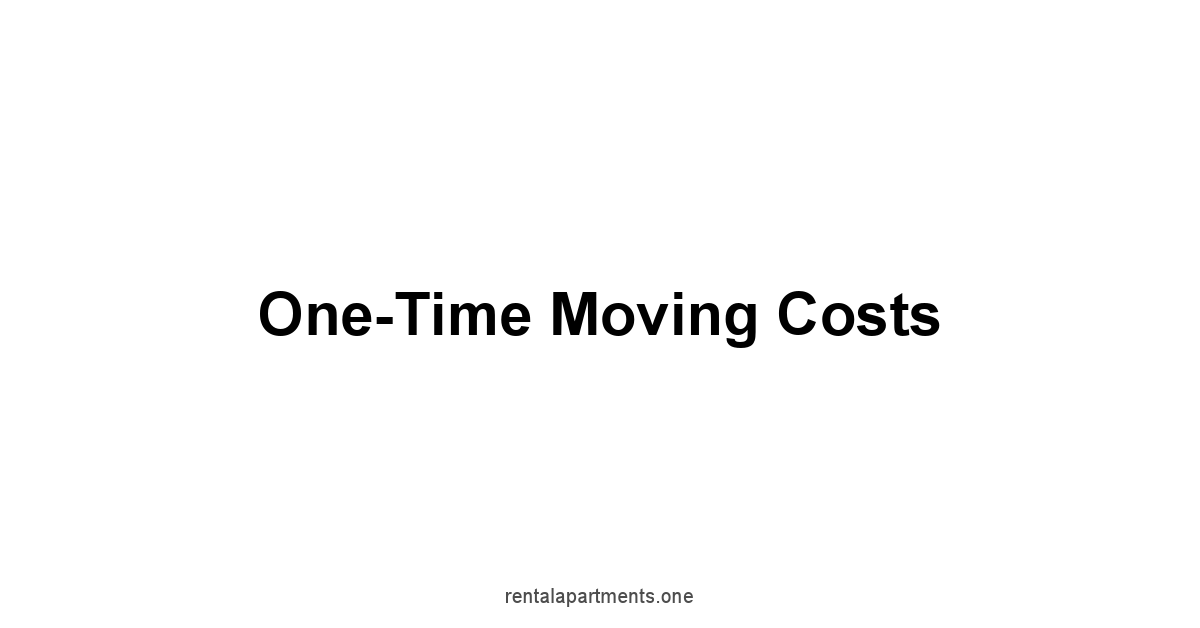
Moving into a new place costs a lot more than just the first month’s rent.
There are one-time costs that you need to be prepared for, such as security deposits, furniture, and moving expenses.
These costs can quickly put a big hole in your budget. So, being organized is key.
You have to see these expenses coming, prepare for them, and then make sure you have enough money to pay for them.
Moving isn’t just a change of address, it’s a financial commitment, a big one at that.
Ignoring the one-time costs can set you back before you even move in.
Plan for them, or they will hit you hard and will make your first few months unnecessarily tough.
Smart planning here will reduce a lot of stress, and will let you begin your new chapter without any financial burdens.
Security Deposit and First Month’s Rent
One of the first things you have to do when moving into a new place is pay the security deposit and first month’s rent.
These are big upfront costs, and you need to be prepared for them.
They are not optional, and you need to plan for them carefully.
You need to know how much they will cost, and make sure you have the funds ready to pay for them.
- Security Deposit:
- The security deposit is a payment you make to cover any damages in the apartment when you move out.
- This amount is often equal to one month’s rent, but it can also be higher or lower depending on the location.
- It is important to read the terms of your lease, it will contain all the information, as well as conditions where you might not get it back.
- First Month’s Rent:
- You will almost always need to pay the first month’s rent before you move in.
- Be sure to check what form of payment they accept, most places don’t accept cash.
- Additional Costs
- Some landlords might ask for an additional fee to cover costs such as background checks, or cleaning fees.
Here is a basic example
| Item | Cost | Notes |
|---|---|---|
| Security Deposit | $1200 | Usually equal to one month’s rent. |
| First Month’s Rent | $1200 | |
| Application Fee | $50-$100 | Depends on the place of residence |
| Admin Fee | $50-$100 | Some places charge for administration |
| Total | $2500-$2600 |
These are substantial expenses, so prepare and save for them.
You need to know the details of the place you want to live in before you commit, and make sure the costs fit your budget.
Moving Truck or Service Costs
Moving all your stuff from point A to point B is expensive.
Whether you’re doing it yourself or hiring movers, it’s going to cost you some money.
You need to plan for this, and weigh the pros and cons of each, and then see what makes the most sense to you. You have a choice, and you need to make it smartly.
This is more than just moving, it’s a planned project, and you need to treat it as such.
- DIY Moving:
- Truck Rental: Renting a truck might be cheaper than hiring movers, but it’s a lot of hard work, and can be risky if you don’t know how to drive a truck.
- Supplies: Don’t forget things like boxes, tape, and furniture blankets.
- Friends: Friends may not be professionals, so don’t expect the move to be perfect.
- Hiring Movers:
- Quotes: Get multiple quotes from moving companies, don’t just pick one, always research.
- Insurance: Make sure the movers are insured, you don’t want your stuff to break and have no way to get compensation.
- Tips: Tipping the movers can add up, if you can afford it.
- Factors Affecting Costs:
- Distance: The further you’re moving, the more it’ll cost.
- Weight: The heavier your stuff, the more the move will cost, it is better to sell or give some things away if you are not using them, to reduce costs.
- Time of Year: Moving during peak seasons and weekends are always more expensive.
A quick table to help with moving costs:
| Moving Method | Estimated Cost | Notes |
|---|---|---|
| Truck Rental | $200-$500 | Includes gas and supplies. Based on distance, and truck type |
| Hiring Movers | $500-$1500+ | Varies based on company, distance, and the amount of stuff you have, includes tips and fees |
| Supplies | $50-$150 | Boxes, tape, etc. |
| Total | $250-$1650+ |
Moving cost will depend on your situation, but it’s good to have a plan before you commit.
The cost might seem high, but a moving service will save you a lot of stress, time, and even physical pain.
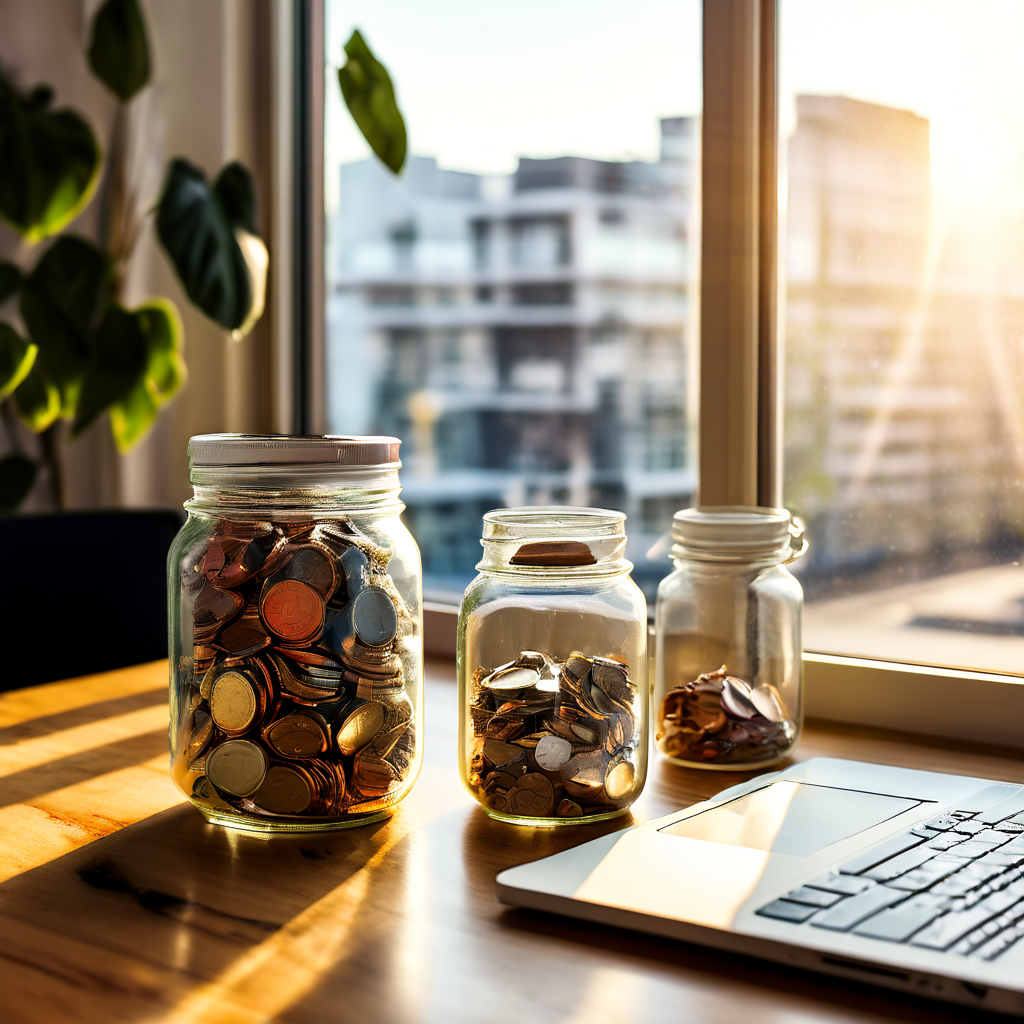
New Furniture and Home Goods
A new apartment might need some new furniture or other home goods.
Unless you’re moving into a fully furnished place, you’ll need a bed, sofa, kitchen supplies, and so on.
This can be costly, so you need to plan it carefully. Buying everything at once will break your bank.
You need to be wise, patient, and buy only what you need, over time, instead of all at once.
- Essential Furniture:
- Bed:
- Sofa:
- Dining table and chairs:
- Storage solutions:
- Kitchen Supplies:
- Pots and pans:
- Plates, bowls, and cutlery:
- Cooking utensils:
- Bathroom Essentials
- Towels:
- Shower curtain:
- Bath mat:
- Tips to Save Money:
- Buy Used: Look for used items on Facebook Marketplace, Craigslist, or local thrift stores, they are usually cheaper.
- Start with Essentials: Only buy what you need and nothing more, you can add items over time.
- Look for Sales: Shop around to find the best deals.
- Borrow: If possible, borrow from family or friends, this can save you a lot of money.
- Hand me downs: If you have family or friends that are willing to give you some items they don’t use anymore, this is the cheapest option possible.
Here’s an idea of what it might cost:
| Item | Estimated Cost | Notes |
|---|---|---|
| Bed | $300-$1000 | Depending on the size, type, and quality |
| Sofa | $400-$1200 | Depends on size and material |
| Dining Set | $200-$800 | Table and chairs |
| Kitchen Supplies | $100-$400 | Depends on how much you need |
| Bathroom Items | $50-$200 | Including shower curtains, towels, and rugs |
| Total | $1050-$3600 |
Don’t feel like you have to buy everything right away.
Start with the most important things and add the rest over time as you can afford it, and never buy anything if it is not necessary.
Creating a Detailed Budget Plan
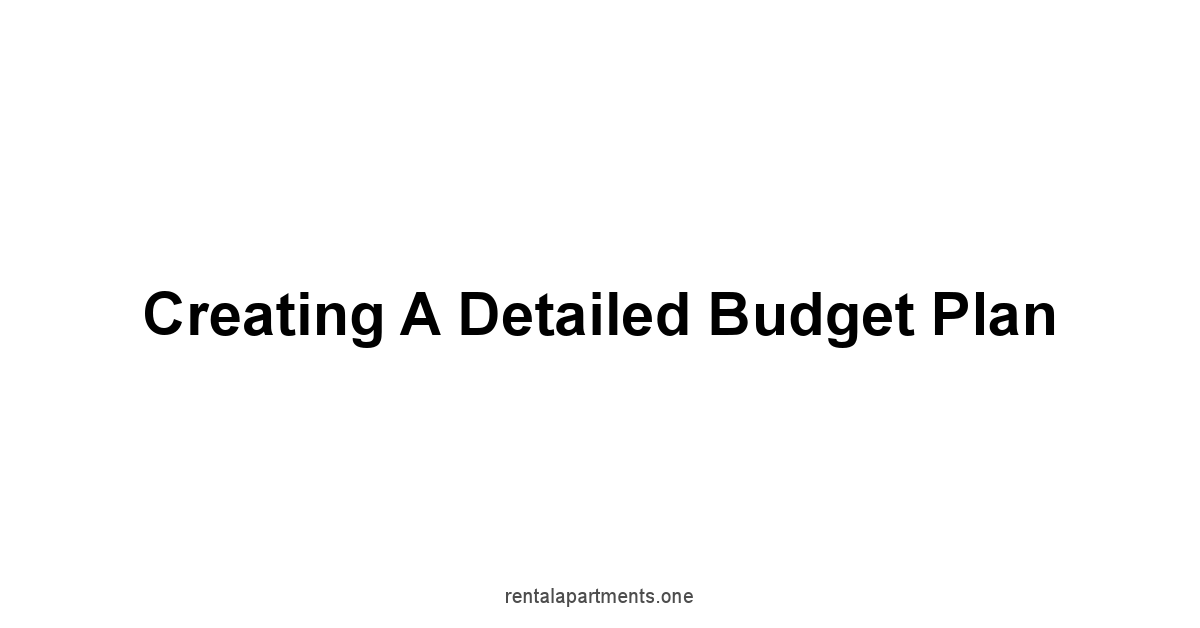
You know your income, and you have a picture of your expenses. Now it’s time to create a budget.
This isn’t about restricting yourself but about being in control of where your money is going.
A budget is a guide, a tool to help you reach your financial goals, a way to live in peace, without money worries.
A detailed budget plan is your friend, it will keep you in check.
Creating a budget is not a one time job, it’s an ongoing process.
You need to track your spending, set up a system that works for you, and adjust your plan as you go.
This is where you take all of your financial knowledge and turn it into a plan that will work in your day to day life.
It’s all about taking responsibility for your money.
Tracking Your Spending
Before you can get control of your finances, you need to know where your money is going.
Tracking your spending isn’t about being paranoid, it’s about awareness.
It’s about seeing where your money is going, and then choosing what to do with it.
It’s about having the power to make informed decisions.
This is the base for any budget, you need to know where every cent is going, if you want to be in control.
- Methods for Tracking Spending:
- Notebook/Journal: A simple notebook can help you keep track of your spending. Write down everything you buy, be detailed.
- Spreadsheet: You can use Google Sheets or Excel to create a spreadsheet, and organize your finances there.
- Budgeting Apps: There are multiple apps like Mint or YNAB that are created to make budgeting easier.
- Bank Statements: Go through your bank statements every month, you’ll see where you’re spending your money, this is more of a retroactive look, and not a daily one.
- Categorize Your Spending:
- Fixed Expenses: Rent, utilities, insurance, payments etc.
- Variable Expenses: Groceries, entertainment, eating out, and other similar items.
- Savings: The money you’re putting aside for the future.
- Regularly Review Your Spending:
- Make a habit to review your spending at least once a week, or daily if you feel the need to.
- See where you’re spending more than expected, or where you could cut back.
Here’s an example of how you can categorize your spending:
| Category | Example Spending |
|---|---|
| Fixed Expenses | Rent, utilities, car payments, insurance |
| Variable Expenses | Groceries, eating out, entertainment, clothing |
| Savings | Emergency fund, investments, other future needs |
Tracking your spending isn’t a chore, it’s your ticket to financial freedom, it gives you a base to make wise choices.
This information is essential for building a budget that fits your needs and goals.
Setting Up a Budget Spreadsheet or App
Spreadsheets or budgeting apps are your tools for creating and maintaining a budget, and if you use them wisely, they will give you a clear picture of your spending and saving.
You need to pick a method that will make budgeting easy, fun, and efficient.
This is not about doing something that is difficult and that you will not maintain, this should be easy and something that you will be able to keep up with for years to come.
- Spreadsheet Google Sheets or Excel:
- Create Categories: Set up categories for income, expenses, and savings.
- Track Transactions: Enter each transaction as it happens, do not leave it for later, it should be part of your day to day.
- Use Formulas: Use formulas to calculate totals and see where you’re spending the most money, don’t manually add up the numbers.
- Visualize Data: Create charts or graphs to better understand your spending habits, visualizations help you see the big picture and make changes accordingly.
- Budgeting Apps Mint, YNAB, etc.:
- Connect Accounts: Link your bank accounts and credit cards.
- Automatic Tracking: Apps automatically track your transactions, saving you time.
- Budgeting Tools: Most apps offer budgeting tools and reports to help you analyze your spending, and even set up financial goals.
- Customizable: These apps are usually customizable to fit your specific needs.
Here’s an example of a simple budget spreadsheet setup:
| Month/Date | Income | Category | Expense | Notes |
|---|---|---|---|---|
| 2024-06-01 | $2500 | Salary | ||
| 2024-06-02 | Rent | $1200 | ||
| 2024-06-02 | Utilities | $190 | ||
| 2024-06-04 | Groceries | $500 | ||
| 2024-06-04 | Savings | $300 | ||
| Total | $2500 | $2190 |
Pick the method that best suits your needs.
Either the spreadsheets, or the app will keep your budget clear and organized.
Having a budgeting tool is essential, and you need to stick to it.
The 50/30/20 Budgeting Rule
The 50/30/20 rule is a simple, but effective, guide to managing your money. It will make budgeting easy, and clear.
It simplifies a lot of the financial jargon and gives you a framework for you to follow, it’s a rule that is easy to understand, and easy to implement.
This rule is a way to manage your money without being too strict, allowing for a balanced budget.
- 50% for Needs:
- Needs are things you can’t live without, your absolute necessities.
- Rent, utilities, groceries, insurance, and transportation.
- This part of your budget should be the priority, you need to pay for your needs first.
- 30% for Wants:
- Wants are things you enjoy, the things you don’t need to survive, but you still want them.
- Eating out, entertainment, hobbies, shopping, and other similar items.
- This is the more flexible part of the budget, where you have some freedom of choices.
- 20% for Savings/Debt:
- This is the money you put aside for your future needs.
- Savings, investments, and debt payments.
- This is the most important part, that guarantees your financial future, don’t ignore this.
- How to Implement:
- Calculate your monthly income, your net income, the real number you work with.
- Divide that number by 50%, 30%, and 20%.
- Make sure your expenses do not exceed the budget in each category, if you overspend, see what you can reduce in the next month.
- Adjust your percentages if needed, to fit your situation.
Here’s how the 50/30/20 rule might look with a $2,500 monthly income:
| Category | Percentage | Amount | Example Expenses |
|---|---|---|---|
| Needs | 50% | $1,250 | Rent, utilities, groceries, transportation |
| Wants | 30% | $750 | Entertainment, dining, hobbies |
| Savings/Debt | 20% | $500 | Emergency fund, investments, paying off debt |
The 50/30/20 rule gives you a simple and effective way to manage your budget.
It’s not a strict rule, but a guideline, a starting point for a healthy financial life.
Saving Strategies for Your Move
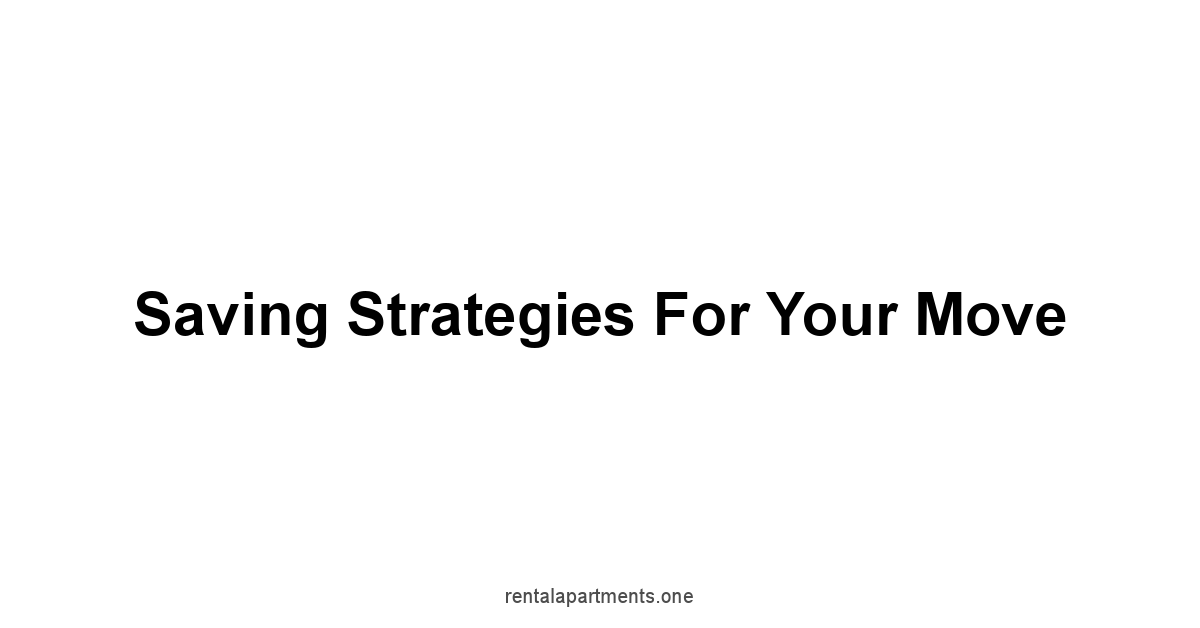
Saving for a big move like getting a first apartment isn’t a simple task, you need to have some strategies to help you with it.
It requires planning, discipline, and some sacrifices, but it is all worth it when you see yourself moving into a new place that is just your own.
It’s not just about cutting costs, it’s also about creating a new plan that will make you save more money faster.
Saving for a move requires more than just wishful thinking, you need a plan.
You need to look at your spending habits, you need to make some adjustments, and you need a system that will ensure that you are saving enough money for your move.
Being proactive about it will give you the peace of mind, knowing that you’ll be financially ready for your new adventure.
Cutting Back on Non-Essentials
If you want to save money, the first thing you need to do is to reduce spending on non-essential things, the wants and not the needs, it’s all about making choices, and choosing what is essential to your move.
You do not need to remove all joy from your life, but instead of spending all of your money on small stuff, prioritize the move.
- Identify Non-Essentials:
- Eating Out: Reduce how often you eat out or get takeout, try cooking more at home.
- Entertainment: Find cheaper ways to have fun, instead of going out every weekend.
- Shopping: Do you really need that new outfit or item? Do you really need it now? Think about it.
- Subscriptions: Do you really need all of those streaming services, or other recurring subscriptions?
- Small Expenses: Coffee shops, small snacks, or any other small purchases add up.
- Strategies to Cut Back:
- Meal Plan: Cooking your own meals will save you a ton of money, plan it out before going to the supermarket.
- Free Activities: Instead of spending
Final Thoughts
Budgeting for your first apartment is a journey, not a sprint, and you have to be ready for it.
You’ve looked at your income, you’ve estimated the expenses, and you’ve even thought about the one-time costs.
Now you have the tools you need, the knowledge and the skills to make informed choices, and find a place that fits your budget.
Remember, this is your home, the place where you’ll live, grow, and make memories, and you have the power to make it yours.
The most important thing to remember is that this is not a one-time thing, it’s an ongoing process.
Your budget will need adjustments as life changes, it’s a living document, not something that is written in stone, so be prepared to adjust it, to change it, and to make it work for you.
According to the Bureau of Labor Statistics, the average rent in the U.S.
Has increased by 6.9% in the past year, showing how important is to stay on top of things.
Keep tracking your spending, and keep planning your budget.
It is all worth it, and will keep you secure in the future, giving you the freedom you need to make your own choices.
Now is the time to take action.
It’s time to make a spreadsheet, choose your budget app, and start tracking your spending.
Don’t be scared by the numbers, embrace them, and learn from them.
Every decision you make, every choice you make will have an impact, and the more responsible you are with your money, the better your financial future will be.
The 50/30/20 rule is a good starting point, but remember that it is a guide, you have to adapt it to your needs, to make it work for you.
As you’re getting ready to move, remember that saving doesn’t have to be a sacrifice, you can have fun while saving.
Look for those free activities, and take the time to discover your local community, it may even save you money on entertainment.
This is not just about finding an apartment, it’s about starting a new phase of your life.
It’s about taking responsibility for your financial future, and doing it with awareness, wisdom, and joy.
You have the knowledge, the skills and the tools you need, now it’s time to put them in practice, and make it happen, and it is going to be something worth celebrating.
Frequently Asked Questions
What’s the first thing I should do before budgeting for an apartment?
Know your money. Not the gross number, but the real take-home pay.
That’s your net income, the cash you can actually use. Ignore this and you’re building on sand.
Get that number straight from your pay stub, it’s the only one that matters.
How do I calculate my net income?
Start with your gross income, the total amount you earn. Then subtract taxes – federal, state, local.
Next, subtract other deductions like health insurance and retirement contributions. What’s left? That’s your net income. The number that actually hits your bank account.
What if I have more than one source of income?
Count it all.
Regular paychecks, side hustles, freelance work, part-time gigs, everything. Don’t miss a single dollar.
Every little bit adds up and paints the whole picture.
This is about being real, not wishing things were different.
What are the main expenses I should consider besides rent?
Rent’s the big one, sure, but don’t forget utilities – electricity, water, gas, trash, and sewage, check with your landlord to see what you will pay.
And renter’s insurance, you need that to protect your stuff.
Then there’s internet, and maybe cable, and commuting, if it is not walking distance, all of that costs money. All those costs add up, fast.
Why do I need renter’s insurance?
Landlord’s insurance doesn’t cover your stuff, just the building.
If a pipe bursts or there’s a fire, your belongings are gone without renter’s insurance.
It’s a small price to pay for protection and peace of mind.
Get a quote, it is way cheaper than buying everything again.
How do I estimate utility costs before moving in?
Check with the local providers for estimates, they will be able to give you a general idea.
Ask the landlord what other tenants have paid for electricity, gas, and water, this will give you a more accurate number.
Don’t assume the cost is the same everywhere, every building is different.
How much should I budget for groceries?
Look at your spending habits.
Do you eat out a lot or cook at home? Plan your meals and go to the store with a list, or you will end up buying things you don’t really need.
It depends a lot on what you eat, so keep track of it, and make sure your spending on food is not excessive.
What are some one-time moving costs I should expect?
There’s the security deposit, and the first month’s rent, usually about one month’s rent or more.
Then there are moving costs, if you are hiring movers, or renting a truck.
And don’t forget new furniture and home goods if you are moving into an empty apartment. All that is a big investment.
What’s a security deposit?
It’s the money you pay to cover any damages to the apartment when you move out.
Usually it is one month’s rent, or even more, and you need to have the funds ready for that, it is not optional.
Should I hire movers or do it myself?
Weigh the pros and cons.
Hiring movers is less work, but it costs a lot more.
Renting a truck and doing it yourself is cheaper, but it’s a lot more physical work, and you might break something in the process.
How can I track my spending?
Use a notebook, a spreadsheet, or an app.
Write down everything you buy, every single transaction.
Then categorize your spending: fixed, variable, and savings, this will give you a clear picture of where your money is going.
What’s the 50/30/20 budgeting rule?
It’s a simple way to manage your money.
50% goes to needs, the essentials you can’t live without.
30% is for wants, the stuff you enjoy, like entertainment, and eating out.
20% is for savings and debt payments, for your future.
This is a guide, not an unbreakable rule, but is a good place to start.
How do I save for my move?
Cut back on non-essentials.
Eat out less, find free activities, look at all those subscriptions that you don’t really need, and stop buying stuff you don’t need.
Be disciplined, it will pay off when you move into your own place.

